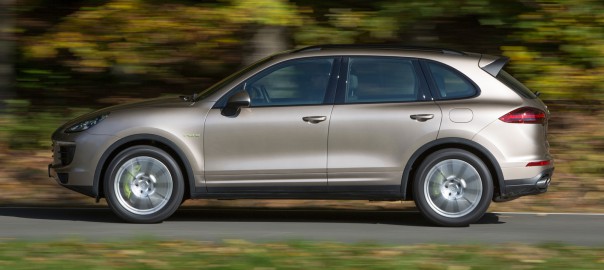A Cayenne hybrid of heightened economy potential, and quite attractively priced given its complexity and capabilities
What is it?
Porsche is keen to sell us plug-in hybrids. It now makes three, although one is rather unaffordable, it being the £652,849 918 Spyder. The other two are the Panamera and the new Porsche Cayenne e-Hybrid, which replaces the plain hybrid version.
This upgraded petrol-electric Cayenne is part of the revised range presenting a freshened styling and new features that include the economy-promoting coasting mode provided by the previous hybrid alone, stop-start that kills the engine a few mph before halting and a launch-control system with the optional Sport Chrono pack.
It also has more precise suspension geometry and a greater dynamic range between the Comfort and Sport modes for both steel-sprung and air-suspended versions. Improved rear seat comfort and a heated screen option are among the detail improvements.
But the upgrades to the Cayenne hybrid are a lot more substantial. Aside from the facility to plug it into a cheaper mains energy supply, a lithium-ion battery pack of almost six times the kilowatt-hour capacity replaces the previous nickel-metal hydride pack.
That allows the electric motor’s output to jump from 46bhp to 94bhp, while the electric-only range lengthens from 1.6 miles to between 11 and 22 miles, although Porsche’s development engineers say they’ve gone further.
It now cruises at up to 78mph rather than 40mph on amperes alone, and its 410bhp system output allows it a 5.9sec sprint to 62mph rather than the 6.5sec of the previous 380bhp hybrid. Its CO2 emissions reduce spectacularly from 193g/km to 79g/km, although the EU’s methods for measuring plug-in hybrid economy and carbon emissions are seriously misleading.
That said, this hybrid Cayenne will be genuinely cheaper to run than the last, tax-wise and when maximising travel on electricity alone. Of which there’s a good chance.
What is it like?
The Cayenne plug-in’s powerpack is near-identical to the plug-in Panamera’s (a more energy-dense battery pack and all-wheel drive are the main differences) the pair proving surprisingly reluctant to engage their petrol engines to achieve decent progress.
In the E-Power mode the Cayenne will keep up with most traffic; press the accelerator more firmly and the supercharged V6 leaps into life, its torque faultlessly synchronising with the electric motor’s.
At which point you can access truly substantial acceleration, the V6’s revs rising with a slightly industrial and not unappealing rortiness.
Despite its substantial weight, the Cayenne handles with some panache. It rolls a bit, even in the firmest of its air springs’ settings, but that doesn’t prevent it from tracing curves with pleasingly assured confidence, your enjoyment heightened by the steering’s precision.
With both motors working hard, a decently sporting pace is easily achieved. There’s further entertainment to be had from trying to maximise your electric range through brake recuperation.
Should I buy one?
It all makes this Cayenne a particularly interesting example of the breed, and if you successfully harness its powers, a pretty economical one too.
The price of this revised hybrid is exactly the same as the V8 diesel’s despite the fact that this is a vastly more complex machine, and though the hybrid is slower, that makes this plug-in impressive value among full-size, premium SUVs.
Source: Autocar
